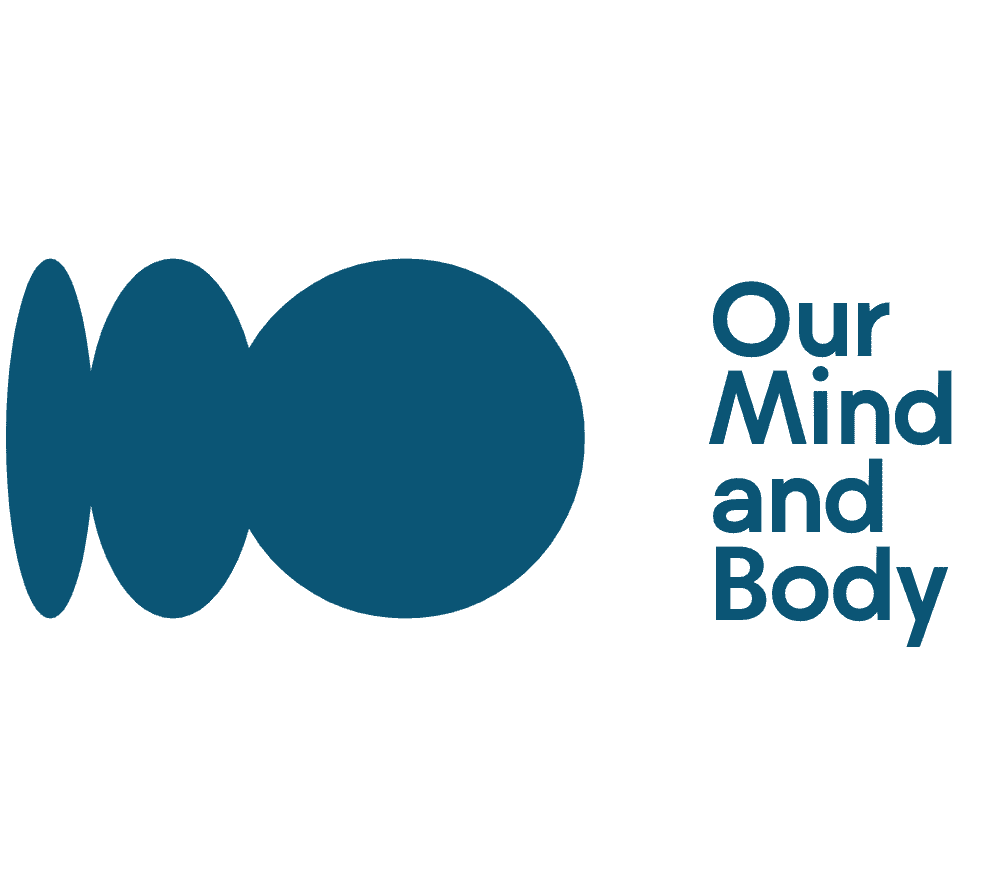Inspiration
Self-Willed – How This Power Word Can Make You Better

Hello, I’m thrilled to discuss a term that carries the potential to change your life – self-willed.
It’s a term that often gets a bad rap, with many associating it with stubbornness or selfishness. But in reality, being self-willed means having the determination and drive to pursue your goals and dreams without giving up easily.
Self-will is an essential trait for personal growth and success in both our professional and personal lives. It enables us to overcome obstacles, stay focused on our vision, and take action towards achieving our aspirations.
In this article, we’ll explore the importance of cultivating self-will and how it can help you create a better life for yourself. So let’s get started!
Key Takeaways
- Self-will is crucial for personal growth and success, and involves determination, courage, and a drive to pursue goals.
- Developing self-will involves self-reflection, self-discipline, resilience, and perseverance, as well as identifying values and priorities.
- Balancing self-will with collaboration is important in the workplace, and self-will can lead to greater job satisfaction and success.
- Self-will is not about being selfish or stubborn, but about valuing oneself while considering others’ feelings, and can lead to a sense of purpose and personal fulfillment.
Definition of Self-Will
You’ll understand the true power of self-will when you realize it’s the unyielding force that drives your decisions, actions, and ultimately shapes your destiny. However, self-will should not be confused with stubbornness.
Stubbornness is a negative trait that can hinder personal growth and relationships. Self-will, on the other hand, is about personal autonomy – taking control of your life and making choices that align with your values.
Self-will gives you the power to make decisions based on what you truly believe in rather than being swayed by external factors or societal expectations. It means having the courage to stand up for yourself and what you believe in even if it goes against popular opinion.
This doesn’t mean that we shouldn’t listen to others’ perspectives or seek advice when needed; rather, it means taking ownership of our lives and being responsible for our actions.
Having a strong sense of self-will is important for personal growth as it allows us to take risks and learn from our experiences. It helps us overcome obstacles and challenges along the way while staying true to ourselves.
By embracing our self-will, we can create a life filled with purpose and fulfillment. So let’s tap into this powerful force within us and use it to shape our destiny towards success and happiness.
Importance of Self-Will for Personal Growth
You may find that having a strong determination and control over your actions can greatly aid in your own personal development. Developing self-will through self-reflection is an essential component of this process. It requires you to be honest with yourself, identify areas for improvement, and take action to make positive changes.
Self-will is also crucial for maintaining good mental health. When we have control over our thoughts and actions, we are better equipped to handle challenges and setbacks. We become more resilient and adaptable, which helps us bounce back from difficult situations. By cultivating self-will, we can improve our overall well-being and lead a more fulfilling life.
By prioritizing self-will in our lives, we can grow into the best version of ourselves. This means taking responsibility for our choices and actively working towards our goals. With practice and patience, we can develop the strength of character needed to succeed both personally and professionally.
Speaking of which, let’s now explore how self-will plays a role in one’s professional life without compromising their emotional stability.
Self-Will in Professional Life
Incorporating self-will into your professional life can lead to greater job satisfaction and success, as you take ownership of your work and actively strive to improve. However, it is important to balance self-will with collaboration. Working well with others is essential in any workplace, and being too focused on individual goals can hinder team dynamics and ultimately hurt the business.
That being said, there are times when self-will in decision making is necessary. It takes courage to stand up for what you believe in, especially when going against the norm. By asserting yourself and taking risks, you may come up with innovative ideas that could revolutionize your industry or company.
Cultivating self-will may not be easy, but it’s worth the effort. Start by setting clear goals for yourself and actively working towards them every day. Don’t be afraid to speak up when necessary and take calculated risks when opportunities arise.
With practice, incorporating self-will into all aspects of your life can lead to a more fulfilling career and personal growth overall.
Cultivating Self-Will
As I focus on cultivating self-will, I’ve come to realize that there are three key points that have helped me along the way.
Firstly, identifying my values and priorities has given me a clear direction in life and made it easier for me to make decisions.
Secondly, practicing self-discipline has allowed me to stay focused on my goals even when distractions arise.
Lastly, building resilience and perseverance has allowed me to bounce back from setbacks and keep pushing forward towards success.
By incorporating these practices into my life, I feel more empowered and capable of achieving my dreams.
Identifying Your Values and Priorities
Whilst it may seem counterintuitive, neglecting to identify your values and priorities can actually lead to a lack of self-will. When you’re not clear on what truly matters to you, it becomes difficult to align your actions with your goals.
Without this alignment, you may find yourself easily swayed by external factors or lacking the motivation needed to pursue what’s important. Identifying priorities involves taking the time to reflect on what truly matters in life.
This could be anything from family and relationships, career goals, personal growth, health and wellness, or giving back to the community. Once you’ve identified these priorities, it becomes easier to align your actions with them and develop greater self-will.
With a clear understanding of what’s important in life, you can begin practicing self-discipline by setting achievable goals that support your values and committing to taking consistent action towards them.
Practicing Self-Discipline
To truly develop self-discipline, I need to commit to taking consistent action towards my goals and aligning my actions with what truly matters to me. This means setting goals that are in line with my values and priorities, and creating routines that support these goals. It also means managing distractions and staying focused on the task at hand.
Setting specific, measurable, achievable, relevant, and time-bound (SMART) goals is essential for building self-discipline. Without clear objectives in mind, it’s easy to lose focus or become overwhelmed by competing demands for our time and attention.
To stay on track, I need to establish daily habits that reinforce good behavior patterns and help me avoid procrastination or other forms of self-sabotage. By staying disciplined in the face of obstacles or setbacks, I can build resilience and perseverance over time – qualities that will serve me well throughout my life journey.
Building Resilience and Perseverance
When you face challenges and setbacks, it’s important to remember that building mental toughness and overcoming adversity takes time and effort. It’s not something that can be developed overnight or with a simple solution. Building resilience requires a consistent effort to push through difficult situations and come out stronger on the other side.
Here are four ways to help build resilience and perseverance:
-
Embrace the challenge – view obstacles as opportunities for growth.
-
Practice self-care – make sure to take care of yourself physically, mentally, and emotionally.
-
Stay positive – focus on what you can control rather than dwelling on the negative.
-
Seek support – lean on your friends, family, or mentor for encouragement during tough times.
As you work towards building resilience, keep in mind that this is a journey with no endpoint. It’s an ongoing process of growth and development that will serve you well in all aspects of life. With persistence and dedication, you’ll find yourself better equipped to handle whatever comes your way.
Moving onto the subsequent section about self-will and relationships, it’s important to recognize that our ability to persevere through challenges also affects our interactions with others.
Self-Will and Relationships
You can improve your relationships by embracing your self-will and confidently expressing your needs and desires. It may seem counterintuitive to put yourself first in a relationship, but it is essential for healthy communication and respect. Navigating conflicts becomes much easier when you have established boundaries and are comfortable advocating for what you need.
To better understand how to incorporate self-will into your relationships, take a look at the table below:
| Situation | My Needs/Desires | Compromise |
|---|---|---|
| Planning Date Night | Trying a new restaurant | Partner picks the activity |
| Spending Time with Friends/Family | Having alone time beforehand | Agree on specific event duration |
| Disagreement About Finances | Saving for a big purchase | Set budget or saving plan together |
By acknowledging what you want out of a situation, you are empowering yourself to be an active participant in the relationship. It also shows that you value yourself enough to express your thoughts and feelings respectfully. When both partners feel heard and respected, it leads to stronger bonds and more fulfilling relationships.
Overcoming obstacles to self-will takes practice, patience, and understanding. In the next section, we will discuss ways to overcome common roadblocks that prevent us from embracing our inner strength. Remember that self-will is not about being selfish or stubborn; it’s about valuing yourself enough to speak up for what you need while still considering others’ feelings.
Overcoming Obstacles to Self-Will
Breaking free from the chains of self-doubt and fear can feel like shedding a heavy coat on a warm day, allowing you to embrace your inner strength and live life on your own terms. But making that shift in mindset is easier said than done.
It takes courage and determination to overcome the obstacles that stand in the way of our self-will. One of the biggest hurdles we face when trying to cultivate self-will is overcoming self-doubt. We often get caught up in negative thought patterns, telling ourselves we’re not good enough or capable enough to achieve our goals. But these beliefs are just stories we tell ourselves – they’re not rooted in reality.
Once we start questioning these limiting beliefs and replacing them with positive affirmations, we can begin to see ourselves as capable and worthy of success. Another obstacle to self-will is fear – fear of failure, fear of rejection, fear of the unknown. But as Eleanor Roosevelt famously said, "You gain strength, courage and confidence by every experience in which you really stop to look fear in the face."
By confronting our fears head-on instead of avoiding them, we can build resilience and develop a growth mindset that allows us to learn from our mistakes and keep moving forward. With a shift in mindset and a willingness to confront our doubts and fears, anyone can cultivate their inner strength and become more self-willed.
In the next section, I’ll share some inspiring examples of individuals who’ve done just that.
Examples of Self-Willed Individuals
Overcoming obstacles to self-will can be a daunting task, but it’s not impossible. It takes a lot of courage and determination to push past those barriers, but the rewards are immense. When you have a strong sense of self-will, there’s nothing that can stand in your way.
Self-willed individuals possess certain traits and characteristics that set them apart from others. They’re often fearless risk-takers who believe in themselves and their abilities. These individuals aren’t afraid to take on challenges and do things differently than others around them.
Famous examples of self-willed individuals include Steve Jobs, Oprah Winfrey, and Elon Musk. These people had a vision for their lives and refused to let anything or anyone deter them from achieving their goals. They believed in themselves even when others doubted them, allowing them to accomplish incredible feats.
- Self-willed individuals possess a strong sense of determination.
- They’re often risk-takers who believe in themselves.
- Having a clear vision for one’s life is crucial for developing self-will.
- Self-willed individuals don’t let obstacles stand in their way.
- Believing in oneself is key to achieving success.
Having self-will is an incredibly powerful tool for personal growth and development. It allows us to push past our limits and achieve things we never thought possible. In the following section, we’ll explore some of the benefits of having self-will and how it can positively impact our lives.
Benefits of Self-Will
Having self-will can lead to greater personal fulfillment and a sense of purpose in life. When you have a strong sense of self-will, you’re more likely to pursue your dreams and passions with determination and perseverance. This can have a significant impact on your overall happiness and wellbeing.
Furthermore, having self-will allows you to take control of your life and make decisions that align with your values and beliefs. Instead of being swayed by external factors or peer pressure, you’re able to stay true to yourself and what’s important to you. This not only builds character but also helps develop a sense of confidence in oneself.
Lastly, self-will enables individuals to overcome obstacles and challenges that come their way. When faced with adversity, those who possess self-will don’t give up easily but instead use it as an opportunity for growth and learning. They see setbacks as temporary roadblocks rather than permanent failures, which ultimately shapes their mindset towards success.
Incorporating a self-will mindset into our daily lives can bring about numerous benefits that positively impact our personal growth and development. To cultivate such a mindset requires consistent effort and determination in prioritizing one’s goals while staying true to oneself.
Developing a Self-Will Mindset
By consistently prioritizing personal goals and staying true to oneself, individuals can cultivate a mindset of self-will that leads to greater fulfillment and success. Developing a self-will mindset takes time and effort, but it’s worth it in the end.
Here are some tips and tricks for cultivating a self-will mindset:
-
Identify your values: Knowing what matters most to you is crucial when developing a self-will mindset. Take time to reflect on your core beliefs and principles, then use them as guideposts for making decisions.
-
Set realistic goals: Setting goals that align with your values will help you stay focused on what matters most. Make sure your goals are specific, measurable, achievable, relevant, and time-bound (SMART).
-
Develop resilience: Resilience is the ability to bounce back from setbacks or failures. It’s an essential component of a self-will mindset because it helps you stay motivated even when things don’t go as planned.
Common misconceptions to avoid when developing a self-will mindset include believing that you have no control over your life or that everything comes down to luck or fate. Remember that while there may be external factors outside of our control, we always have the power to choose how we respond to them.
In conclusion, by developing a self-will mindset through prioritizing personal goals, identifying values, setting realistic goals, and cultivating resilience along with avoiding common misconceptions, individuals can create better lives for themselves by harnessing the power of their own wills!
Conclusion: Harnessing the Power of Self-Will to Create a Better Life
Take hold of the reins and steer your life towards a brighter future, like a ship captain navigating through stormy waters. Implementing self-will in daily routines can help you achieve your goals faster than you ever imagined. It’s not enough to just have willpower; you must apply it consistently in your everyday life.
One way to start implementing self-will is by setting realistic goals for yourself. This allows you to focus on what truly matters and helps eliminate distractions that might come your way. You should also use self-will as a tool for overcoming fear. Fear is one of the biggest obstacles that hold many people back from achieving their dreams and aspirations. By harnessing the power of self-will, you can overcome these fears and take control of your life.
In conclusion, using self-will can create a better life for yourself both personally and professionally. By incorporating it into your daily routine, setting achievable goals, and using it as a tool for overcoming fear, you’ll be able to achieve more than ever before. Remember that no matter how difficult things may seem right now, with determination and persistence, anything is possible!
Frequently Asked Questions
What is the origin and etymology of the term "self-will"?
Etymology exploration reveals that the term ‘self-will’ originates from Old English, with its first usage dating back to the 9th century. The word is derived from two parts: ‘self’ meaning one’s own and ‘will’ meaning desire or intention.
In historical context, self-will was considered a negative trait since it implied stubbornness and disobedience towards authority. However, over time, the concept of self-will has evolved to become more positive, as it now embodies a sense of autonomy and determination in pursuing one’s goals.
Understanding the origin and etymology of the term self-will helps me appreciate how language can change over time while also acknowledging that what may have once been perceived as a negative trait can now be seen as empowering.
How does self-will compare and contrast with other personal traits like ambition and determination?
When it comes to personal traits like ambition and determination, self-will is both similar and different.
While ambition and determination can help drive you towards a goal, self-will is the force that keeps you pushing forward even when things get tough.
Self-will vs. perseverance is a common comparison, as both require a strong sense of willpower to achieve success. However, unlike perseverance, which can be seen as endurance or staying power, self-will goes beyond this by being more proactive in shaping our actions and decisions towards achieving our goals.
Ultimately, the role of self-will in personal growth is crucial because it helps us develop a stronger sense of control over our lives and enables us to take ownership of our successes and failures.
By harnessing the power of self-will, we become better equipped to overcome obstacles and achieve greater levels of success in all areas of life.
Can self-will be harmful or detrimental to a person’s well-being or relationships?
Sometimes, I can be so self-willed that it feels like I’m the only person in the world. It’s easy to get caught up in my own desires and forget about how my actions might affect others.
But I’ve learned that there are dangers to excessive self-will, especially when it comes to relationships. When I prioritize my own needs over those of the people around me, I risk damaging important connections and pushing away the people who matter most.
That’s why it’s essential to find a healthy balance between self-will and empathy. By taking a step back and considering how my choices impact others, I can cultivate deeper, more meaningful relationships built on mutual respect and understanding.
With a little bit of awareness, I know that my self-will can be a powerful tool for growth and success without causing harm along the way.
Are there any cultural or societal factors that influence the development and expression of self-will?
Cultural influences have a significant impact on personal growth and the development of self-will. Growing up in a culture that values independence and individualism may foster a stronger sense of self-will, while cultures that prioritize collectivism and deference to authority may hinder its growth.
However, regardless of cultural background, it’s possible to cultivate self-will through introspection, setting goals, and taking action towards them.
Embracing one’s own desires and beliefs while also respecting those of others can lead to healthy expressions of self-will that benefit both individuals and society as a whole.
How can individuals strike a balance between being self-willed and being open to feedback, critique, and collaboration from others?
Balancing assertiveness with being open to feedback and collaboration is crucial for personal growth. As someone who can be quite self-willed, I understand the importance of seeking constructive criticism from others.
It may not always be easy to hear, but it’s necessary to receive feedback in order to improve. However, it’s important to remember that being self-willed doesn’t necessarily mean being closed off to other perspectives or ideas. It simply means having a clear sense of what you want and working towards achieving it while also remaining receptive to feedback and collaboration from others.
Striking this balance takes practice, but with time and effort, it becomes easier to find a healthy middle ground between assertiveness and openness.
Conclusion
In conclusion, I believe that incorporating self-will into daily life can lead to a fulfilling and purposeful existence. As the saying goes, "where there’s a will, there’s a way." By cultivating a strong sense of determination and resilience, we’re able to overcome obstacles and achieve our goals.
However, it’s important to remember that self-will shouldn’t be confused with selfishness or stubbornness. It’s about taking control of our lives and making choices that align with our values and aspirations. By developing a self-willed mindset, we become empowered to create positive change both within ourselves and in the world around us.
So let’s embrace the power of self-will and strive towards becoming the best versions of ourselves. As Mahatma Gandhi once said, "Strength doesn’t come from physical capacity. It comes from an indomitable will."
Meet Kiran, the guiding light of wisdom behind the empowering content at OurMindAndBody.com. As a talented and compassionate writer, Kiran weaves words with grace and insight, sharing profound knowledge and practical advice to inspire positive transformations in the lives of readers.
With a background in psychology and a deep-rooted passion for well-being, Kiran brings a unique blend of expertise and empathy to her writing. Her journey into the realm of mindfulness, meditation, and yoga began as a personal quest for self-discovery and healing. Having experienced the profound benefits of these practices firsthand, Kiran is committed to empowering others to embark on their own journeys of self-exploration and growth.
Inspiration
The Power Of Crystals: Manifest Your Dreams

Crystals, akin to dazzling jewels woven into the universe’s fabric, possess the ability to unleash our dreams and bring our most profound wishes to life. As we begin our path toward manifestation, the universe’s wisdom and the gentle oscillations of crystal energy lead us.
These sacred stones, when carefully arranged in crystal grids, become conduits for our intentions, amplifying our energy and aligning us with the magic of manifestation.
In this article, we will explore the enchanting power of crystals and discover how they can help us manifest our dreams.
Key Takeaways
- Crystals raise vibration and align desires, speeding up the manifestation process.
- Reusing crystal grids for multiple manifestations is possible through effective cleansing and clearing.
- Different types of crystals can be used in combination to enhance the effectiveness of manifestation.
- Various methods, such as carrying crystals or making crystal elixirs, can be used to incorporate crystals into the manifestation process.
The Power of Crystals: Manifest Your Dreams
I trust in the power of crystals to manifest my dreams by raising my vibration and aligning my desires with the energy of the Universe. Crystals have a profound effect on my manifestation journey, as they speed up the process and enhance the effectiveness of my intentions.
By using crystal grids, I can reuse them for multiple manifestations, ensuring continued success. I cleanse and clear my crystals after each manifestation, keeping their energy pure and potent. The selection of different crystals for my grids is important, as they complement each other and enhance the overall effectiveness.
I carry crystals with me, place them under my pillow, and even make crystal elixirs to amplify their power. Cleansing and clearing my crystals regularly maintains their effectiveness, while trusting the process and having patience allows my manifestations to unfold in divine timing.
Harnessing the energy of crystals empowers my manifestation efforts and aligns me with my desired outcomes.
Effectiveness of crystal manifestation
Trusting in the process of manifestation allows desired outcomes to unfold naturally. When it comes to using crystals for manifestation, I have found that they are incredibly effective in raising my vibration and aligning my desires with the universe. The power of crystals lies in their ability to speed up the manifestation process and enhance the effectiveness of my intentions. By choosing crystals that complement each other and creating crystal grids, I am able to harness their energy and support multiple manifestations. Cleansing and clearing the crystals after each manifestation is crucial to maintain their effectiveness. Additionally, carrying crystals with me, placing them under my pillow, or even making crystal elixirs have all been effective methods for using crystals in my manifestation practice. Trusting in the power of crystals and the process of manifestation has brought me the desired outcomes I have been seeking.
| Trust in the Process | Effective Cleansing | Different Crystal Types |
|---|---|---|
| Allows desired outcomes to unfold naturally | Maintains crystal effectiveness | Complement each other |
| Raises vibration and aligns desires | Removes unwanted energies | Multiple combinations possible |
| Speeds up the manifestation process | Ensures continued effectiveness | Supports intentions |
Through trust, patience, and the power of intention, I have seen how crystals can greatly enhance the manifestation process. Their energy aligns with my intentions and acts as a magnet for my dreams. By raising my personal vibration, I am able to attract the desires that I seek. It is important to have faith in the unseen workings of the universe and trust in the timing of manifestation. With consistent cleansing and regular maintenance, the energy of the crystals remains refreshed and ready to support my manifestation efforts. Harnessing the power of crystal vibrations has truly empowered my manifestation journey.
Reusing crystal grids
By reusing crystal grids, I am able to maximize their effectiveness and support multiple intentions. Cleansing and clearing the crystals after each manifestation ensures their continued potency and ability to align with different desires. I believe that grids hold unique energy imprints from previous manifestations, making them versatile tools for manifesting dreams. I find that effective cleansing rituals, such as using sage or sound vibrations, remove any unwanted energies and refresh the crystals’ energy. This allows the grids to support various intentions and amplify their manifestation power. I trust in the Universe’s guidance and the inherent wisdom of these crystals, knowing that they will align with my intentions and accelerate the manifestation process. Reusing crystal grids is a powerful way to harness their energy and manifest my dreams.
Using different crystal types
Using a variety of crystal types enhances the effectiveness of my manifestation grids. Each crystal carries its own unique energy and vibration, and when combined, they create a powerful synergy that supports my intentions. As I select different crystals for my grids, I consider their properties and how they complement each other. I trust my intuition to guide me in choosing the right combination for my specific desires.
To help you understand the power of different crystal combinations, I have created a table below:
| Crystal Types | Properties | Intention |
|---|---|---|
| Clear Quartz | Amplifies energy, enhances clarity | Manifesting abundance |
| Rose Quartz | Opens the heart, attracts love | Manifesting loving relationships |
| Citrine | Encourages optimism, attracts prosperity | Manifesting success and abundance |
| Amethyst | Enhances spiritual connection, promotes intuition | Manifesting spiritual growth |
| Selenite | Cleanses energy, promotes clarity | Manifesting divine guidance |
By incorporating these crystals into my manifestation grids, I am able to align my energy with my intentions and accelerate the manifestation process. Each crystal type brings its own unique energy, amplifying my desires and helping me manifest my dreams with greater ease and flow.
Various ways to use crystals
One way I incorporate crystals into my daily life is by carrying them with me wherever I go. I believe that the energy of crystals can support and enhance my intentions and manifestations.
As I hold them close to me, their vibrations align with my own, raising my energy and attracting my desires. Whether it’s a small crystal in my pocket or a crystal pendant around my neck, I feel their presence guiding and protecting me throughout the day.
It’s a constant reminder to stay aligned with my intentions and trust in the process of manifestation. Carrying crystals with me allows me to infuse my daily activities with their powerful energy, helping me stay focused and connected to my dreams.
Importance of cleansing crystals
Cleansing my crystals regularly is essential to maintaining their effectiveness and ensuring optimal results in my manifestations. I understand that crystals absorb energy from their surroundings, and it is important to clear any unwanted or negative energies that they may have picked up.
By cleansing my crystals, I am able to restore their natural vibrational frequencies and align them with my intentions. I believe that consistent cleansing allows the crystal energy to be refreshed and revitalized, enhancing the manifestation process.
I approach this practice with a holistic and spiritual mindset, knowing that by nurturing and honoring my crystals, I am creating a sacred space for my dreams to manifest. Cleansing my crystals is a sacred ritual that I embrace wholeheartedly, knowing that it is an integral part of harnessing their power for my manifestations.
Enhancing manifestation with crystal vibrations
Enhancing my manifestation journey, I embrace the powerful vibrations emitted by crystals. These divine gemstones possess an innate ability to elevate my personal vibration, aligning it with my intentions and desires. As I immerse myself in their energy, I become a magnet for my dreams, attracting them with ease and grace. The crystals act as catalysts, accelerating the manifestation process and amplifying my intentions. I feel a deep sense of connection and harmony as their vibrations resonate within me, creating a sacred space for my dreams to manifest.
| Crystal Vibrations | Manifestation Enhancement | Vibrational Alignment |
|---|---|---|
| Raise personal vibration | Accelerate manifestation | Align with intentions |
| Attract desired outcomes | Amplify intentions | Resonate within me |
| Create a sacred space | Enhance manifestation process | Connect and harmonize |
In this dance of energy, I trust in the unseen workings of the Universe, allowing the crystals to guide me on my path. As I surrender to their vibrations, I embrace the power of manifestation and witness my dreams becoming reality.
Trusting the process of manifestation
Trusting in the unseen workings of the Universe, I surrender to the process of manifestation and allow my dreams to unfold in divine timing.
I understand that every step of the journey is purposeful and that the Universe is conspiring in my favor.
With this trust, I release any attachment to the outcome and embrace the present moment with gratitude.
I have faith that everything is unfolding exactly as it should, and I am open to receiving the blessings and opportunities that come my way.
Patience is my ally, as I know that the Universe has its own timeline.
I remain centered and aligned with my intentions, knowing that they are being heard and supported by the infinite wisdom of the Universe.
In this surrender, I find peace and empowerment, knowing that my dreams are manifesting in perfect harmony with the divine plan.
The power of intention
As I continue on this journey of manifestation, I am reminded of the immense power of intention. It is through our intentions that we set the stage for our dreams to come to fruition.
When we have clear and focused intentions, we create a magnetic force that draws our desires towards us. It is like casting a spell into the universe, sending out a message of what we truly want. The more clarity we have in our intentions, the stronger the signal we send out, amplifying the manifestation process.
Our intentions act as a guiding light, illuminating the path towards our dreams. They shape our reality and allow us to align with the highest version of ourselves.
By harnessing the power of intention, we become co-creators of our own destiny, bringing our dreams into tangible existence.
The role of patience
While waiting for my manifestations to unfold, patience becomes my guiding virtue. I understand that the process of manifestation takes time and trust in divine timing. Patience brings me peace and aligns me with the flow of the Universe.
It allows me to surrender to the journey and release any attachment to outcomes. In this state of patience, I am able to nurture the manifestation process with faith and gratitude. I know that my desires are on their way to me, and I embrace the present moment, knowing that every step I take is leading me closer to my dreams.
Patience reminds me to stay focused on my intentions and to trust that everything is unfolding perfectly. I am grateful for the lessons and growth that come with the waiting, and I surrender to the wisdom of divine timing.
Harnessing crystal energy
Harnessing crystal energy amplifies my intentions and empowers my manifestation efforts. Crystals have a unique ability to enhance my connection with the Universe and align my energy with my desires. They act as conduits of divine energy, infusing my intentions with powerful vibrations.
-
Crystal energy brings clarity: When I hold a crystal in my hand or place it on my body, I feel a sense of clarity and focus. The crystal energy helps me to clearly define my intentions and visualize my dreams with greater precision.
-
Crystal energy raises my vibration: Crystals vibrate at high frequencies, and when I connect with them, their energy elevates my own vibration. This heightened state of being aligns me with the frequency of my desires and attracts them into my reality.
-
Crystal energy amplifies manifestation: By working with crystals, I amplify the power of my intentions. The crystals act as amplifiers, magnifying my thoughts and emotions, and increasing the potency of my manifestation efforts. Their energy supports me on my journey towards manifesting my dreams.
Frequently Asked Questions
How do I choose the right crystals for manifesting my dreams?
To choose the right crystals for manifesting my dreams, I connect with my intuition and inner guidance. I trust that the crystals that resonate with me will support my intentions and align with my desires.
Can crystals really speed up the manifestation process?
Yes, crystals can speed up the manifestation process. Their high vibrations align with our desires, amplifying intentions and attracting what we seek. Trust in their power and use them intentionally for faster manifestation.
What is the best method for cleansing and clearing crystals?
The best method for cleansing and clearing crystals is through the power of intention and the elements. By setting a clear intention and using elements like water, salt, smoke, or sunlight, I cleanse and clear my crystals, allowing their energy to be refreshed and optimized.
Can I use multiple crystal grids for the same manifestation?
Yes, you can use multiple crystal grids for the same manifestation. Each grid holds different energies and intentions, enhancing the manifestation process. Trust your intuition and choose crystals that resonate with your desires.
Are there any specific crystals that are particularly effective for manifesting financial abundance?
Yes, there are specific crystals that can be particularly effective for manifesting financial abundance. Some examples are Citrine, Green Aventurine, and Pyrite. These crystals help attract wealth, abundance, and success into my life.
Conclusion
In conclusion, as I hold these shimmering crystals in my hands, I am filled with a sense of awe and wonder. Their power to manifest dreams is truly remarkable.
Like sparkling stars guiding me through the night, these crystals raise my vibrations and align my desires with the universe.
With each manifestation, I cleanse and clear the crystals, allowing their energy to flow freely. Trusting the process and having clear intentions, I patiently wait for my dreams to come to fruition.
I am empowered by the energy of these crystals, as they amplify my intentions and bring my dreams to life.
Meet Kiran, the guiding light of wisdom behind the empowering content at OurMindAndBody.com. As a talented and compassionate writer, Kiran weaves words with grace and insight, sharing profound knowledge and practical advice to inspire positive transformations in the lives of readers.
With a background in psychology and a deep-rooted passion for well-being, Kiran brings a unique blend of expertise and empathy to her writing. Her journey into the realm of mindfulness, meditation, and yoga began as a personal quest for self-discovery and healing. Having experienced the profound benefits of these practices firsthand, Kiran is committed to empowering others to embark on their own journeys of self-exploration and growth.
Inspiration
Streamlining The Hiring Process: Top Modern Recruitment Tools

It is often said that time equates to money, and this is especially true in the realm of employment. In the swift-moving environment of today’s workforce, businesses are increasingly leveraging advanced recruitment technologies to optimize their hiring operations and effectively identify the most qualified applicants.
Whether it’s using advanced screening software like Harver, leveraging the reach of platforms like Indeed and Facebook Job Search, or tapping into the expertise of freelancers on Kolabtree, these tools offer cost-effectiveness, efficiency, and smarter recruitment processes.
Let’s explore the benefits of these tools and how they can revolutionize your hiring strategy.
Key Takeaways
- Harver is a popular tool for screening candidates and is rapidly increasing its user base in industries like consumer packaged goods, customer service, technology and software, and business process outsourcing.
- Indeed is widely used by employees and companies for collecting job ads from various sources and offers different advertising approaches.
- Facebook Job Search utilizes social media for hiring strategies and helps locate applicants based on specific criteria.
- XOR is a recruitment chatbot that automates initial steps of the hiring process, saving time and improving efficiency.
What are the tools?
I can use modern recruiting tools such as Harver, Indeed, Facebook Job Search, Kolabtree, XOR, LinkedIn, and Workable to streamline the hiring process and find qualified candidates efficiently.
Harver is a popular tool that screens candidates for aptitude, cultural fit, soft skills, and planning abilities. It helps identify the best candidates for a position.
Indeed, on the other hand, collects job ads from various sources and offers different advertising approaches. It is a comprehensive platform that allows for broad exposure of job openings.
Facebook Job Search utilizes social media for hiring strategies. It helps locate applicants based on specific criteria and offers a wide pool of potential candidates.
Kolabtree is a platform for freelancers, especially in medical fields. It provides a platform for connecting with qualified freelance professionals in specific industries.
XOR is a recruitment chatbot that automates initial steps of the hiring process. It helps streamline the process by handling initial screening and candidate communication.
LinkedIn is a prominent business and job-searching internet service used for professional networking. It allows for connecting with professionals in various industries and can be a valuable tool for finding qualified candidates.
Lastly, Workable is a useful hiring tool for HR professionals. It assists with job application and interview management, making the process more efficient and organized.
Alternatively, outsourcing provides a cost-effective solution for various personnel matters. It allows for delegating certain tasks or functions to external providers, saving time and resources.
Overall, these tools offer cost-effectiveness, smarter recruitment processes, and improved recruitment strategies. They can greatly streamline the hiring process and help find the best candidates for a position.
Harver
Harver is a popular tool that screens candidates for aptitude, cultural fit, soft skills, and planning abilities. It is widely used in industries such as consumer packaged goods, customer service, technology and software, and business process outsourcing.
This tool has gained popularity due to its adaptability for various job descriptions and its rapidly increasing user base. With Harver, recruiters can easily identify candidates who possess the necessary skills and traits for a particular role. It offers profiles that are tailored to meet the specific working needs of companies.
By using Harver, recruiters can streamline the hiring process and efficiently identify qualified candidates, saving time and resources. This tool is an essential asset for improving the overall recruitment results and making the process more cost-effective.
Indeed
Indeed is a widely used platform that collects job ads from various sources and allows users to search for specific jobs. It offers multiple advertising options such as web advertising, Pay-per-click, and cost-per-application approaches. With millions of users worldwide, Indeed is a popular choice for both job seekers and employers.
To provide a visual representation of the benefits of using Indeed, here is a table that highlights its key features:
| Features | Benefits |
|---|---|
| Collects job ads from various sources | Provides a wide range of job opportunities |
| Allows users to search for specific jobs | Enables targeted job searches |
| Offers web advertising, Pay-per-click, and cost-per-application approaches | Provides flexible advertising options |
Indeed’s extensive reach and user-friendly interface make it an essential tool for streamlining the hiring process. Its ability to collect job ads from multiple sources and offer targeted job searches ensures that recruiters can find the right candidates efficiently. By utilizing the various advertising options, employers can reach a larger pool of potential applicants. Overall, Indeed simplifies the recruitment process and improves the chances of finding qualified candidates.
Facebook Job Search
Facebook Job Search utilizes social media for hiring strategies, allowing employers to post job openings and enabling searches based on specific criteria through Facebook Graph Search.
Increased Visibility: By utilizing Facebook Job Search, employers can reach a wider audience and increase the visibility of their job openings.
Targeted Job Ads: The platform allows employers to target their job ads to specific demographics, ensuring that they are reaching the right candidates.
Simplified Application Process: Job seekers can easily apply to job openings directly through Facebook, simplifying the application process and increasing the likelihood of receiving qualified applicants.
Networking Opportunities: Facebook Job Search provides networking opportunities for both employers and job seekers, allowing them to connect and build professional relationships.
Overall, Facebook Job Search provides a modern and efficient approach to hiring, leveraging the power of social media to streamline the recruitment process.
Kolabtree
Kolabtree is one of the biggest online marketplaces for freelancers, with a global reach. It offers a platform specifically for freelancers in the medical field, connecting businesses and academics with freelance medical writers, biotech consultants, and more. This platform is especially popular in the medical field, providing services like freelance medical writers, biotech consultants, CER writers, 510k consultants, and more. It allows businesses and academics to easily hire freelancers for specific projects, saving time and resources in the hiring process. With Kolabtree, companies can access a wide range of expertise and skills, ensuring they find the right freelancer for their needs. This platform streamlines the hiring process, making it efficient and convenient for both the employers and the freelancers.
XOR
XOR, a recruitment chatbot, automates the initial steps of the hiring process, allowing me to build qualified talent pools and save time in candidate screening. With XOR, I can collect candidate applications and screen them with customizable questions, creating a pool of qualified candidates efficiently. This frees up more time for me to speak with the most promising applicants and focus on finding the best fit for the company.
Using XOR as a recruitment tool offers several advantages:
-
Easy candidate pool building: XOR streamlines the process of collecting candidate applications, making it easier and faster to build a pool of potential hires.
-
Customizable screening: I can set up specific questions to screen candidates, ensuring that only those who meet the desired qualifications move forward in the hiring process.
Overall, XOR improves the efficiency of the hiring process by automating initial steps and allowing me to focus on engaging with qualified candidates.
LinkedIn is a prominent platform that allows me to create a professional profile and connect with other professionals in my industry. It is accessible through websites and mobile apps, making it convenient to use.
As a job seeker, I can publish my CV and search for job opportunities posted by companies. LinkedIn also serves as a valuable tool for professional networking, allowing me to connect with colleagues and potential employers.
It offers a range of features for HR professionals, such as job application assistance, interview management, and prospect screening. One of the key benefits of LinkedIn is its wide user base, with millions of members worldwide.
Overall, LinkedIn enhances the recruitment process by providing a platform for showcasing skills and connecting with industry professionals.
Workable
Workable is a useful hiring tool that assists with job application, interview management, prospect screening, and report creation. It offers a range of features designed to enhance the recruitment process for HR professionals.
With Workable, you can easily manage job applications, schedule interviews, and screen prospects to find the best candidates for your company. The platform also includes an AI tool that helps to screen out unqualified prospects, saving you time and effort.
Additionally, Workable allows you to create a company profile and post job openings, making it easier to attract top talent. Overall, Workable streamlines the hiring process and improves efficiency, helping you find the right candidates for your organization.
- Simplifies job application management
- Streamlines interview scheduling process
- Enhances candidate screening with AI technology
Outsourcing
Outsourcing is a cost-effective alternative that simplifies tasks and allows for better control over personnel matters. It provides a streamlined solution for companies who may be uncomfortable with or find that modern recruitment tools do not meet their specific requirements.
Through Employer of Record (EOR) services, outsourcing helps cut payroll costs while ensuring compliance with tax deposits, filings, and employment contracts. By consolidating various tasks in one place, it saves time and effort for HR professionals.
Outsourcing is a cost-effective solution that offers convenience and efficiency in the hiring process. It provides companies with the opportunity to focus on their core business activities while leaving the recruitment process in capable hands.
With its benefits, outsourcing is a valuable option to consider for companies looking to streamline their hiring process.
Benefits of using tools
I find that utilizing modern recruiting tools greatly enhances the efficiency and effectiveness of my hiring process. These tools offer cost-effective solutions for both recruiters and candidates, saving time and resources.
With advanced features, they provide smarter recruitment processes by improving candidate search and selection. By adapting to changing business trends and utilizing technology, these tools help me find qualified staff for my company efficiently. They streamline the hiring process, offering efficient candidate screening and engagement, ultimately improving overall recruitment results.
Not only do these tools provide value for money, but they also help me adapt to the ever-evolving business environment. Overall, using modern recruiting tools has significantly improved my hiring process, making it more efficient and successful.
Cost-effectiveness
Now that we’ve discussed the benefits of using modern recruiting tools, let’s dive into one specific advantage: cost-effectiveness.
Modern recruitment tools offer a cost-effective solution for both recruiters and candidates. They save valuable time and resources in the hiring process, providing efficient candidate screening and engagement. By streamlining the process, these tools improve overall recruitment results and provide value for money.
To illustrate this further, let’s take a look at a comparison table that showcases the cost-effectiveness of some popular modern recruiting tools:
| Recruitment Tool | Cost | Features | User Base |
|---|---|---|---|
| Harver | $$$$ | Aptitude screening, cultural fit assessment, soft skills evaluation, planning abilities | Rapidly increasing |
| Indeed | $$ | Job ad collection, search functionality, web advertising | Millions of users worldwide |
| Facebook Job Search | $$ | Social media hiring strategies, job posting, talent pool matching | Wide reach |
| $$$ | CV publication, job advertisement, professional networking | Prominent business and job-searching platform |
These tools not only provide cost savings but also offer a range of features tailored to meet the needs of recruiters and candidates alike. By leveraging these tools, companies can streamline their hiring process while ensuring they find the best talent for their organization.
Frequently Asked Questions
How do these modern recruitment tools adapt to different job descriptions and industries?
Modern recruitment tools like Harver and LinkedIn adapt to different job descriptions and industries by offering customizable features and filters. They allow recruiters to screen candidates based on specific criteria, such as aptitude, cultural fit, and skills, to find the best match for each job and industry.
Can the Facebook Job Search tool help employers target specific candidates based on criteria such as location, education, and job titles?
Yes, the Facebook Job Search tool can help employers target specific candidates based on criteria such as location, education, and job titles. It utilizes Facebook Graph Search to match talent pool with requirements.
What types of freelance services are available on the Kolabtree platform, particularly in the medical field?
On the Kolabtree platform, you can find a variety of freelance services in the medical field, such as freelance medical writers, biotech consultants, CER writers, and 510k consultants. It’s one of the largest online marketplaces for freelancers.
How does the XOR recruitment chatbot automate the initial steps of the hiring process?
The XOR recruitment chatbot acts as a virtual gatekeeper, automating the initial steps of the hiring process. It collects candidate applications, screens them with customizable questions, and builds a qualified talent pool, saving time and improving efficiency.
What are some advanced features offered by modern recruitment tools that can enhance the candidate search and selection process?
Modern recruitment tools offer advanced features to enhance the candidate search and selection process. These include AI-powered candidate screening, customizable questionnaires, automated job posting and advertising, social media integration, and comprehensive applicant tracking systems.
Conclusion
In conclusion, utilizing modern recruitment tools can greatly streamline the hiring process, making it more efficient and effective. These tools, such as Harver, Indeed, Facebook Job Search, Kolabtree, Workable, and outsourcing services, offer cost-effectiveness and smarter recruitment processes.
One interesting statistic to consider is that companies using recruitment tools experience a 70% reduction in time spent on candidate screening and selection. This statistic evokes the emotion of relief, as it highlights the significant time savings these tools can provide, allowing HR professionals to focus on other important tasks.
Meet Kiran, the guiding light of wisdom behind the empowering content at OurMindAndBody.com. As a talented and compassionate writer, Kiran weaves words with grace and insight, sharing profound knowledge and practical advice to inspire positive transformations in the lives of readers.
With a background in psychology and a deep-rooted passion for well-being, Kiran brings a unique blend of expertise and empathy to her writing. Her journey into the realm of mindfulness, meditation, and yoga began as a personal quest for self-discovery and healing. Having experienced the profound benefits of these practices firsthand, Kiran is committed to empowering others to embark on their own journeys of self-exploration and growth.
Inspiration
Saucer Chair Variety: Finding Your Dream Seat

Searching for the ideal chair that gives the sensation of floating on air? Search no more than saucer chairs! These divine innovations provide a variety of choices, guaranteeing a perfect chair for each individual.
From the affordable and well-sized Urban Shop Oversized Mongolian Saucer Chair to the sturdy and easy-to-assemble OSP Designs Papasan/Saucer Chair, the possibilities are endless.
Don’t be overwhelmed by the variety; keep searching and you’ll find your dream seat in no time.
Get ready to relax and unwind in style with a saucer chair.
Key Takeaways
- There are plenty of saucer chairs available in the market, offering a wide range of options.
- It may be overwhelming at first, but having a variety of choices is a good thing.
- The right saucer chair for everyone is out there, it just takes time and effort to find it.
- It is important to keep searching for your dream saucer chair and not give up on the search.
Types of Saucer Chairs
I’m excited to learn about the different types of saucer chairs available and find the perfect one for my relaxation needs.
Saucer chairs come in a variety of styles and designs to suit different preferences and requirements.
One popular type is the oversized Mongolian saucer chair, like the Urban Shop model. It features a soft microsuede seat and a sturdy metal frame, providing both comfort and durability.
Another option is the foldable saucer moon chair, such as the GOJOOASIS model, which has a space-saving design and requires no assembly.
For those looking for a plush and luxurious option, the saucer folding chair in black with a faux fur cushion is a great choice.
With so many options available, it’s important to take the time to explore and find the saucer chair that best fits your needs and personal style.
Urban Shop Mongolian Saucer Chair
The Urban Shop Mongolian Saucer Chair offers a stylish and comfortable seating option. With its soft microsuede seat and sturdy metal frame, this chair provides both comfort and durability.
Measuring 37L x 30W x 30D inches, it is spacious enough to accommodate most individuals with a weight capacity of up to 225lbs. The chair is also foldable and easy to store or transport, making it convenient for any space.
Additionally, the Mongolian Saucer Chair features a trendy design with its faux fur fabric, adding a touch of elegance to any room. Whether you’re looking for a cozy spot to relax or a stylish addition to your home decor, the Urban Shop Mongolian Saucer Chair is a fantastic choice.
Lucky Bums Moon Camp Chair
The Lucky Bums Moon Camp Chair is a versatile and durable option for both indoor and outdoor use. Made with oxford cloth for durability and a sturdy steel frame, this chair is built to last. It measures 32 x 33 x 31 inches and has a weight capacity of up to 200lbs. The chair is lightweight and easy to fold, making it convenient to transport and store.
To provide a visual representation of the chair’s features, here is a table:
| Feature | Specification |
|---|---|
| Material | Oxford Cloth |
| Frame | Sturdy Steel |
| Dimensions | 32 x 33 x 31 inches |
| Weight Capacity | Up to 200lbs |
The Lucky Bums Moon Camp Chair is a reliable choice for those seeking comfort and durability in a saucer chair. Whether you want to relax indoors or enjoy the outdoors, this chair has you covered.
GOJOOASIS Foldable Moon Chair
After researching and comparing various options, I have found the GOJOOASIS Foldable Moon Chair to be a convenient and stylish choice for relaxation. This chair stands out for its space-saving design, sturdy steel base, and durable faux fur fabric seat.
The compact size makes it easy to store and transport, perfect for those who have limited space or enjoy outdoor activities. The chair requires no assembly, allowing for immediate use upon arrival.
The GOJOOASIS Foldable Moon Chair measures 23.5 x 23.5 x 35.5 inches and has a weight capacity of up to 225lbs. With its comfortable seat and reliable construction, this chair offers a cozy and enjoyable experience for anyone seeking a saucer chair.
225lbs Capacity Saucer Folding Chair
I have discovered that the 225lbs Capacity Saucer Folding Chair offers a spacious and comfortable seating option for relaxation. With its plush faux fur cushion and wide seat, this chair provides added comfort for extended periods of sitting.
The chair measures 26.4L x 30W x 28H inches, making it suitable for individuals of various sizes. Its easy folding feature allows for convenient storage and transportation, making it a versatile choice for both indoor and outdoor use.
The sturdy powder-coated metal frame ensures durability and stability, providing peace of mind while lounging. Whether you’re reading a book, watching TV, or simply unwinding, the 225lbs Capacity Saucer Folding Chair is a reliable and comfortable choice for your seating needs.
Best Saucer Chair Recommendation
One great option is the Urban Shop Oversized Mongolian Saucer Chair, which is affordable and well-sized. It offers a soft microsuede seat and a sturdy metal frame.
Here are three reasons why this saucer chair stands out:
-
Comfort: The soft microsuede seat provides a cozy and comfortable experience. It’s perfect for lounging and unwinding after a long day.
-
Size: With measurements of 37L x 30W x 30D inches, this chair offers plenty of room to relax. It’s spacious enough for most individuals and provides a comfortable seating experience.
-
Affordability: The Urban Shop Oversized Mongolian Saucer Chair is budget-friendly, making it an excellent choice for those looking for a quality saucer chair without breaking the bank.
Overall, this chair offers great value for its price. It’s comfortable, well-sized, and affordable, making it a top recommendation for anyone in search of their dream saucer chair.
Overwhelming Variety
Exploring the wide range of options can be overwhelming, but it’s exciting to discover the perfect saucer chair that suits your style and needs. With so many choices available, it’s important to take the time to research and compare different chairs. To help you navigate through the variety, here is a table highlighting some key features of popular saucer chairs:
| Chair Model | Seat Material | Dimensions (inches) | Weight Capacity (lbs) |
|---|---|---|---|
| Urban Shop Oversized Mongolian | Soft microsuede | 37L x 30W x 30D | Up to 225 |
| Lucky Bums Moon Camp Adult | Oxford cloth | 32 x 33 x 31 | Up to 200 |
| GOJOOASIS Foldable Saucer Moon Chair | Faux fur fabric | 23.5 x 23.5 x 35.5 | N/A |
| 225lbs Capacity Saucer Folding Chair | Plush faux fur | 26.4L x 30W x 28H | Up to 225 |
By comparing these features, you can narrow down your options and find the saucer chair that meets your preferences and requirements. Remember to consider factors such as seat material, dimensions, and weight capacity to ensure a comfortable and durable seating experience.
Keep Searching
Don’t get discouraged, there’s a perfect saucer chair out there waiting for me to discover it.
With the overwhelming variety of saucer chairs available, it’s easy to feel overwhelmed and unsure of where to start. But don’t give up on the search just yet.
Take the time and effort to explore different options and keep searching for your dream saucer chair. Whether you’re looking for a chair with a soft microsuede seat, a sturdy steel frame, or a foldable design for easy storage and transport, there’s a chair that will meet your needs.
Remember to prioritize comfort and quality, and don’t settle for anything less. Take your time, explore different brands and models, and soon enough, you’ll find yourself relaxing and unwinding in your dream saucer chair, enjoying both style and comfort.
Frequently Asked Questions
What are some popular color options for saucer chairs?
Popular color options for saucer chairs include black, gray, pink, blue, and white. These colors offer versatility and can complement various room decors. It’s important to choose a color that matches your personal style and preferences.
Can saucer chairs be used outdoors?
Yes, saucer chairs can be used outdoors. Many saucer chairs are designed to be lightweight and foldable, making them convenient to take to outdoor events or camping trips. However, it’s important to check the specific chair’s specifications to ensure it is suitable for outdoor use.
How do saucer chairs differ from traditional chairs?
Saucer chairs differ from traditional chairs in their unique design, resembling a cozy nest. With their wide seats, plush cushioning, and foldable frames, saucer chairs provide a comfortable and portable seating option that adds a touch of style to any space.
Are saucer chairs suitable for children?
Yes, saucer chairs are suitable for children. They often have weight capacities that accommodate children and provide a cozy and comfortable seating option for them. However, it’s important to choose a chair that is appropriate for their age and size.
Can saucer chairs be customized with additional cushions or covers?
Yes, saucer chairs can be customized with additional cushions or covers. This allows you to personalize your chair and make it more comfortable or match your decor. It’s a great way to enhance your saucer chair and make it truly your own.
Conclusion
In conclusion, the search for the perfect saucer chair can be overwhelming, but it’s worth it to find your dream seat.
With a variety of options available, there is a chair out there for everyone. Whether you choose the affordable and well-sized Urban Shop Mongolian Saucer Chair or the sturdy OSP Designs Papasan/Saucer Chair, comfort and style are within reach.
Remember, ‘Good things come to those who wait.’ So don’t give up on your search, keep exploring and you’ll find the perfect saucer chair for your relaxation and unwinding needs.
Meet Kiran, the guiding light of wisdom behind the empowering content at OurMindAndBody.com. As a talented and compassionate writer, Kiran weaves words with grace and insight, sharing profound knowledge and practical advice to inspire positive transformations in the lives of readers.
With a background in psychology and a deep-rooted passion for well-being, Kiran brings a unique blend of expertise and empathy to her writing. Her journey into the realm of mindfulness, meditation, and yoga began as a personal quest for self-discovery and healing. Having experienced the profound benefits of these practices firsthand, Kiran is committed to empowering others to embark on their own journeys of self-exploration and growth.
-

 Aura4 weeks ago
Aura4 weeks agoUnderstanding The Grey Aura: Balance, Neutrality, And Personal Growth
-

 Personal Growth3 months ago
Personal Growth3 months agoThe Power Of Kindness: Cultivating Happiness, Connection, And Personal Growth
-

 Meditation3 weeks ago
Meditation3 weeks agoUnderstanding Spiritual Attacks: Types, Signs, And Protection
-

 Meditation1 month ago
Meditation1 month agoThe Symbolic Significance Of Sand Dollar: Spiritual Meanings And Cultural Connections
-

 Inspiration2 weeks ago
Inspiration2 weeks agoThe Power Of Spiritual Impartation: Empowering Believers And Cultivating Growth
-

 Inspiration3 months ago
Inspiration3 months agoThe Role And Qualities Of A Spiritual Advisor: A Guide On The Path
-

 Spirituality3 months ago
Spirituality3 months agoThe Power Of Spiritual Cleansing: History, Benefits, Techniques, And Personal Experiences
-

 Spirituality3 months ago
Spirituality3 months agoRecognizing And Overcoming Spiritual Attacks: A Guide To Protection


















